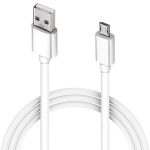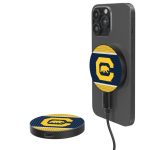Signs of a Faulty Hoverboard Charger
Recognizing the signs of a faulty hoverboard charger is crucial for safe and effective operation. Be aware of these red flags:

- Unusual Noises: A properly functioning charger should operate quietly. If you hear buzzing, crackling, or any unusual sounds, this could indicate an internal problem.
- Physical Damage: Visibly frayed wires, a damaged casing, or exposed components are tell-tale signs. Physical damage can lead to dangerous malfunctions.
- Inconsistent Charging: If your hoverboard is charging intermittently or not holding a charge as it should, the charger may be failing.
- Indicator Light Issues: Most chargers have a light that indicates when the device is charging. If this light doesn’t come on or flashes in an irregular pattern, it might be a sign of malfunction.
- Excessive Heat: Chargers typically get warm during use, but they shouldn’t become too hot to touch. Excessive heat is a sign of electrical issues.
If you notice any of these signs, stop using your hoverboard charger immediately. Continued use can damage the hoverboard’s battery or pose safety risks. It’s important to address charger issues quickly to prevent long-term damage to your hoverboard.
Common Hoverboard Charging Issues
Hoverboard owners often face charging problems that can be both annoying and hazardous. Understanding these common issues is the first step in resolving them.
Charger Not Connecting Properly
If your hoverboard charger doesn’t connect, it’s likely due to alignment issues. Check that the charger’s plug fits securely into the hoverboard port. Also, ensure nothing blocks the connection. Sometimes, debris or dirt inside the charging port can prevent proper contact.
Overheating Charger
An overheating charger is a serious concern that requires immediate attention. Unplug it quickly to prevent damage or fire risk. Hoverboard chargers can overheat due to internal damage or being used in hot environments. Never use a charger that feels too hot to touch and always charge in a cool, dry place.
Slow Charging
Slow charging can signal that your hoverboard charger is not working efficiently. This might be due to a worn-out charger, or the battery itself is nearing the end of its lifespan. It can also occur if you’re using an incorrect charger, not suited for your hoverboard’s specifications.
No Light Indicator
The absence of a light indicator often means the charger is not receiving power. First, try a different power outlet to rule out the outlet as the problem source. If the charger still shows no signs of life, it could be faulty and in need of replacement.
By identifying these common hoverboard charging issues, you can take swift actions to correct them and ensure safe operation.
Step-by-Step Guide to Diagnosing Charger Problems
Diagnosing issues with your hoverboard charger involves a few crucial steps. Follow this guide to find the root cause.
Checking the Power Source
First, ensure the power outlet is functioning. Plug in a different device to test it. If the device works, the issue may lie with the charger. Sometimes, power strips or surge protectors can fail, so try plugging the charger directly into the wall.
Inspecting the Charging Cable and Port
Examine the cable for cuts, kinks, or frayed areas. These can prevent proper charging. Look inside the charging port on your hoverboard for debris, lint, or damage. A clean port and intact cable are essential for an effective charge.
Testing the Charger’s Output
Use a multimeter to check the output voltage of your charger. Compare it with the specifications in the user manual. If the readings don’t match, your charger might be defective. It’s crucial to use a charger that matches your hoverboard’s requirements.

When to Replace Your Hoverboard Charger
Knowing when to replace your hoverboard charger can save you from potential hazards. Here are some clear indicators:
- Persistent Issues: If you’ve tried all troubleshooting steps, but your charger still doesn’t work, it’s time for a new one.
- Visible Damage: Any obvious damage, like exposed wires or a broken casing, means replacement is necessary.
- Age: Like all electronics, chargers have a lifespan. Replace outdated or old chargers to ensure safety.
- Compatibility Issues: A charger that doesn’t fit securely or causes charging problems may not be the right match. Get one that is compatible with your hoverboard’s model.
- Recall Notices: If the manufacturer issues a recall for your charger model, replace it immediately.
- Poor Performance: When charging takes too long or the hoverboard doesn’t hold a charge, a new charger might be needed.
When you decide to replace your hoverboard charger, choose an official or recommended replacement. This ensures compatibility and safety. Remember, continuing to use a faulty charger can damage your hoverboard’s battery and pose serious risks. Stay safe and replace chargers when these signs show up.
How to Maintain Your Hoverboard Charger
Proper maintenance of your hoverboard charger is as important as handling the hoverboard itself. Here are some easy-to-follow tips to help you maintain your charger in top condition.
Proper Handling and Storage
Always handle your charger with care. Avoid yanking the cable out of the plug; instead, gently remove it by holding the plug itself. Store your charger in a dry, cool place, away from direct sunlight or extreme temperatures as these can degrade its components. Ensure the cables are neatly coiled and not tangled or kinked, as this can cause damage over time. Lastly, keep your charger away from heavy objects that could crush or damage it.
Avoiding Overcharging
An integral part of charger maintenance is to prevent overcharging your hoverboard. Always disconnect the charger from your hoverboard once it’s fully charged. Most modern hoverboards have indicators showing when the charge is complete. Continual overcharging can reduce battery life and effectiveness, and in some cases, may even lead to battery swelling or damage. Use a timer if necessary, to remind you when to unplug the charger.
By adhering to these simple guidelines, you can extend the life of your hoverboard charger, ensuring it remains safe and efficient for as long as possible.
Safety Precautions When Charging Your Hoverboard
Safety should always be your top priority when charging your hoverboard. Follow these precautions to avoid accidents and ensure a secure charging process.
- Read the Manual: Before you begin, read your hoverboard’s manual. It contains crucial safety information specific to your model.
- Use the Correct Charger: Always use the hoverboard charger that came with your device or a recommended replacement. This guarantees compatibility and prevents damage.
- Inspect Before Plugging In: Look over your charger and hoverboard for any signs of damage. Check for exposed wires or debris in the charging port.
- Charge in a Safe Location: Always charge your hoverboard in a cool, dry place away from flammable materials. Do not charge near curtains or on carpeted floors.
- Don’t Leave Unattended: It’s best to be around while your hoverboard charges. This way, you can quickly handle any issues that may arise.
- Keep Away from Water: Water can cause a short circuit. Make sure the charging area is dry and that your hands are dry when plugging in the charger.
- Unplug After Charging: When your hoverboard is fully charged, promptly disconnect the charger. This prevents overcharging and conserves energy.
- Regularly Test Your Smoke Detectors: Ensure your smoke detectors are working in case of unprecedented electric malfunctions while charging.
By keeping these safety precautions in mind, you’ll protect yourself, your hoverboard, and your environment from potential hazards. Regular maintenance and responsible charging practices can go a long way in maintaining your hoverboard’s longevity.

Choosing the Right Replacement Charger
When your hoverboard charger needs replacing, make smart choices to ensure safety and compatibility. Here’s what to consider:
- Official Chargers: Opt for an official charger from your hoverboard’s brand. This guarantees a perfect match for your device’s specifications.
- Check Compatibility: Ensure the new charger matches your hoverboard’s voltage and amperage requirements. Incorrect specs can lead to charging issues or damage.
- Look for Certifications: Choose chargers with safety certifications. These meet strict safety standards, reducing risks of fire or electrical problems.
- Avoid Knock-offs: Steer clear of unbranded or counterfeit chargers. These often cut corners in safety and can be dangerous.
- Read Reviews: Check what other users say about the charger. Positive reviews can guide you to reliable, high-quality options.
- Warranty Matters: A charger with a warranty offers peace of mind. If issues arise, you’re protected.
By picking the right replacement hoverboard charger, you ensure your device charges safely and efficiently. Always prioritize safety over cost when making your choice.

